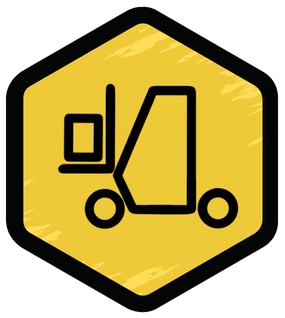kanata-php / forklift
Livewire package to move models around.
Fund package maintenance!
kanata-php
Installs: 103
Dependents: 0
Suggesters: 0
Security: 0
Stars: 0
Watchers: 1
Forks: 0
Open Issues: 0
pkg:composer/kanata-php/forklift
Requires
- livewire/livewire: ^2.10
Requires (Dev)
- orchestra/testbench: ^7.0
README
Forklift
Laravel Livewire Component
composer require kanata-php/forklift
Move assets in a predictable and easy manner with Eloquent and Livewire.
Dependencies
- Laravel
- Livewire
- AlpineJS
Installation
Step 1
Install composer package:
composer require kanata-php/forklift
Step 2
Publish the assets registered in the Service Provider:
php artisan vendor:publish --provider="Kanata\Forklift\ForkliftServiceProvider"
After this you'll find the assets at the directory resources/views/vendor/forklift. At the current version the initial assets are only presentable for projects usign Tailwind CSS.
Step 3
Implement the Kanata\Forklift\Interfaces\AssetRepositoryInterface for the component to know how to interact with your project's models. You'll create one per case (e.g. if you need to move nested directories, one repository, then if you need to move documents through directories, another repository).
Methods:
-
AssetRepositoryInterface::changeCurrentLocation- This method returns current location's "sub locations". This is equivalent to sub folders when you have a folder based structure like a filesystem navigation. -
AssetRepositoryInterface::moveAsset- This method executes the movement between locations of the asset being managed. -
AssetRepositoryInterface::findLocation- This method finds the current location object.The output must be an array with the following fields:
- id (int) - primary key
- title (string) - location's title
- parent (int) - parent location (for nested locations)
Usage
Basics
Let's assume we have a filesystem structure. In this structure you have documents and directories. This package adds a dropdown that allows quickly moving assets in the directory structure.
For such, using eloquent, we would have the models:
- Directory - that keeps the directories structure, having subdirectories and documents inside them.
Example migration:
Schema::create('directories', function (Blueprint $table) { $table->id(); $table->string('title', 40); $table->foreignId('parent')->nullable(); $table->timestamps(); });
- Document - that keeps the documents.
Example migration:
Schema::create('documents', function (Blueprint $table) { $table->id(); $table->string('title', 40); $table->longText('content'); $table->foreignId('directory_id')->nullable(); $table->timestamps(); });
The following component is the dropdown to move documents:
@livewire('forklift-dropdown', [
'currentLocationId' => $document->directory_id,
'locationType' => \App\Models\Directory::class,
'assetId' => $document->id,
'assetType' => \App\Models\Document::class,
'assetRepository' => App\Repositories\DocumentAssetRepository::class,
'parentField' => 'directory_id',
])
The following component is the dropdown to move directories:
@livewire('forklift-dropdown', [
'currentLocationId' => $directory->parent,
'locationType' => \App\Models\Directory::class,
'assetId' => $directory->id,
'assetType' => \App\Models\Directory::class,
'assetRepository' => App\Repositories\DirecotryAssetRepository::class,
'parentField' => 'parent',
])
You can find an example laravel project here.
Events
Forklift dispatches 2 events, in 3 different levels. The 2 events are:
Kanata\Forklift\Events\AssetMoved- Triggered after a successful return from the asset repository.Kanata\Forklift\Events\AssetMoveFailed- Triggered after a fail return from th asset repository.
The 3 levels that these events are dispatched are:
- Laravel Events (https://laravel.com/docs/9.x/events#main-content)
- Livewire Events (https://laravel-livewire.com/docs/2.x/events)
- Browser events via Livewire (https://laravel-livewire.com/docs/2.x/events#browser)
Todo
- Change UI when backend error happens.


